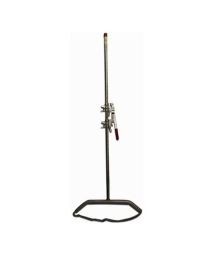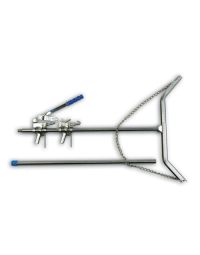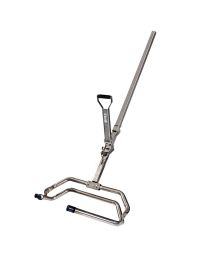A calf puller, also known as a calf jack or calf extractor, is a piece of equipment used to assist in the delivery of a calf during the birthing process in cattle. It is a mechanical device that attaches to the calf's head and shoulders, and is used to apply traction to help guide the calf out of the birth canal. Calf pullers are typically used when a calf is in distress during delivery, and is not progressing down the birth canal normally. They can also be used when the calf is too large to be delivered naturally, or when the cow is weak or unable to push the calf out. The calf puller is operated by a person, usually the veterinarian or a trained livestock handler, and it can be a powerful tool for saving the lives of both the calf and the cow. However, it is important to note that calf puller should only be used under veterinarian supervision, improper use of calf puller may cause injury or death of the calf.
Signs that a calf could be distressed
There are several signs that a calf may be in distress during delivery, including:
- Prolonged or difficult labor: if the cow is pushing for an extended period of time without making progress, the calf may be in distress.
- Lack of progress: if the calf's feet or nose are visible but the calf is not progressing down the birth canal, it may be in distress.
- Weak or absent contractions: if the cow's contractions are weak or absent, the calf may not be receiving enough oxygen and may be in distress.
- Blood or meconium: if there is blood or meconium (the calf's first feces) present in the birth canal, it may indicate that the calf is in distress.
- Abnormal presentation: if the calf is in an abnormal position, such as breech or transverse, it may be difficult for the calf to pass through the birth canal and may be in distress.
- Weak or non-responsive calf: if the calf is born weak or non-responsive, it may be in distress and may not be getting enough oxygen.
What tools do you use alongside a calf puller?
When using a calf puller to assist in the delivery of a calf, there are several other tools that may also be used to help ensure a safe and successful delivery. Some of these tools include:
- Obstetrical chains or ropes: These are used to attach the calf puller to the calf's head and shoulders and provide a means to apply traction.
- Obstetrical handles: These are used to provide a grip when pulling on the chains or ropes.
- Lubricants: To help the calf pass through the birth canal more easily, lubricants such as mineral oil or K-Y jelly may be used.
- Local anesthetics: To reduce pain and discomfort, local anesthetics may be used to numb the cow's perineal area.
- Oxytocin: To stimulate contractions and increase the cow's ability to push the calf out, a veterinarian may administer oxytocin.
- Calving jack: A calving jack is a mechanical device that is used to help deliver a calf. It can be used in cases where a calf is too large to be delivered naturally or when the cow is weak and unable to push the calf out.
- Calving Aid: a hand-held device that can be used to help deliver calf by providing additional leverage and support to cow during birth.




